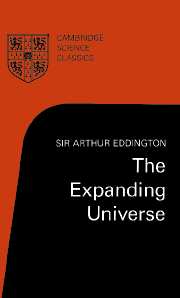CHAPTER IV - The Universe and the Atom
Published online by Cambridge University Press: 15 December 2009
Summary
See Mystery to Mathematics fly!
Pope, DunciadI have explained in the previous chapters that theory led us to expect a systematic motion of recession of remote objects, and that by astronomical observation the most remote objects known have been found to be receding rapidly. The weak point in this triumph is that theory gave no indication how large a velocity of recession was to be expected. It is as though an explorer were given instructions to look out for a creature with a trunk; he has brought home an elephant—perhaps a white elephant. The conditions would equally well have been satisfied by a fly, with much less annoyance to his next-door neighbour the time-grabbing evolutionist. So there is great argument about it.
I think the only way to remove the cloud of doubt is to supplement the original prediction, and show that physical theory demands not merely a recession but a particular speed of recession. The theory of relativity alone will not give any more information; but we have other resources. I refer to the second great modern development of physics—the quantum theory, or (in its most recent form) wave-mechanics. By combining the two theories we can make the desired theoretical calculation of the speed of recession.
This is a new adventure, and I do not wish to insist on the accuracy or finality of the first attempt.
- Type
- Chapter
- Information
- The Expanding UniverseAstronomy's 'Great Debate', 1900–1931, pp. 93 - 126Publisher: Cambridge University PressPrint publication year: 1920
- 1
- Cited by

